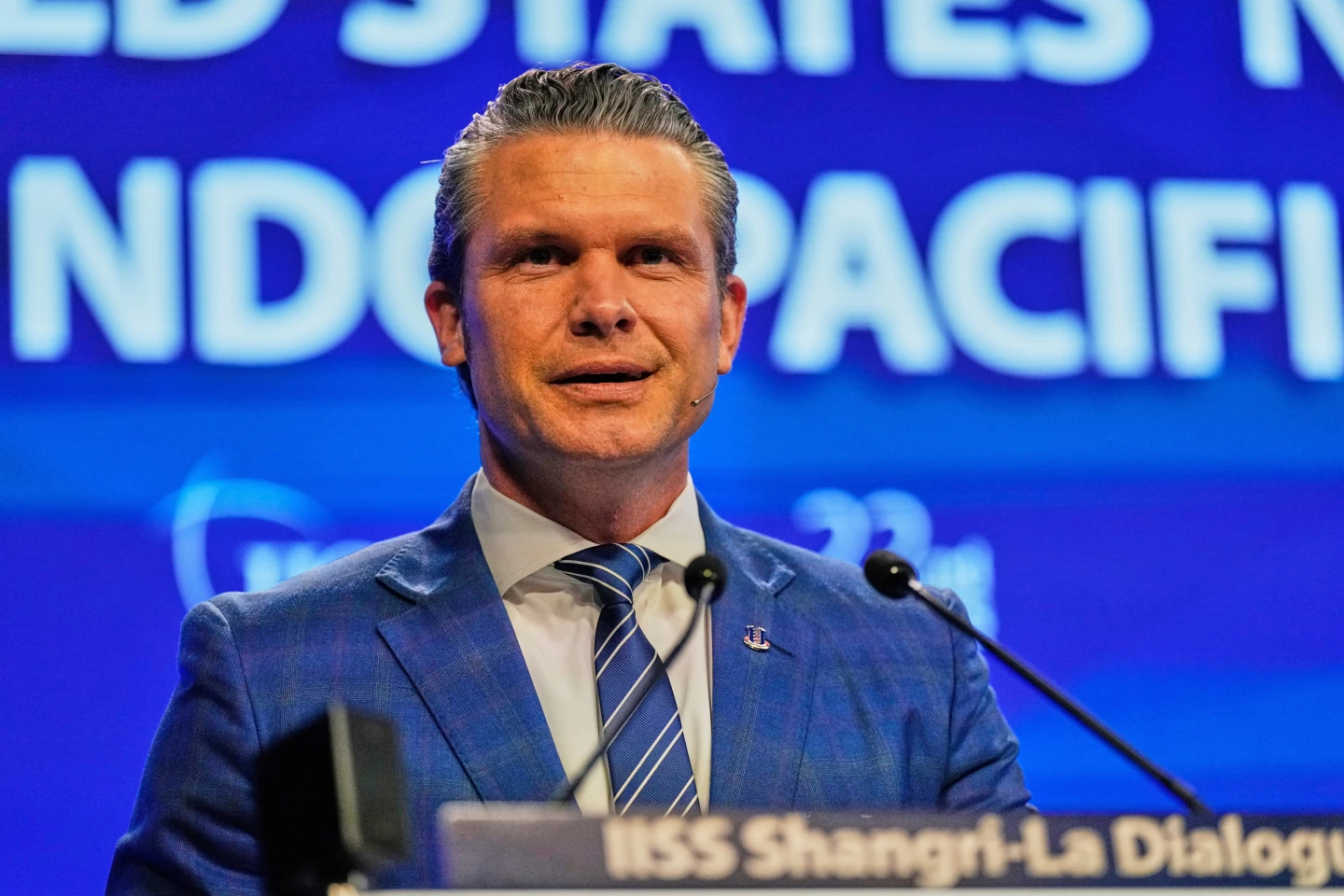US Defense Secretary Pete Hegseth assured Indo-Pacific allies on Saturday that Washington would not leave them to face growing military and economic pressure from China alone, while urging them to boost their own defense contributions.
Hegseth stated that the US would strengthen its overseas defenses to counter what the Pentagon views as rapidly escalating threats from Beijing, particularly its aggressive posture toward Taiwan. China has conducted multiple military drills simulating a blockade of the self-ruled island, which it claims as its own, while the US remains committed to Taiwan’s defense.
“China’s military is rehearsing for the real deal,” Hegseth said in a keynote speech at the Shangri-La Dialogue security conference in Singapore. “We are not going to sugarcoat it — the threat China poses is real. And it could be imminent.”
Rear Adm Hu Gangfeng, vice president of China’s National Defense University and head of Beijing’s delegation, dismissed Hegseth’s remarks as “groundless accusations.”
“Some claims are fabricated, some distort facts, and some are cases of a thief crying ‘stop thief,’” Hu said, without providing specifics. He accused the US of “provoking trouble, inciting division, and destabilising the Asia-Pacific.”
China aims to ensure its military can seize Taiwan by force by 2027 if necessary — a deadline experts see as aspirational rather than fixed. Beijing has also constructed artificial islands in the South China Sea for military outposts and advanced hypersonic and space capabilities, prompting the US to develop its own space-based “Golden Dome” missile defenses.
Hegseth warned that China is not only building up forces but “actively training for [invasion], every day.” He also highlighted Beijing’s expanding influence in Latin America, including efforts to control the Panama Canal.
The US defense chief urged Indo-Pacific nations to raise defense spending to 5% of GDP, matching European levels. “We must all do our part,” he said.
However, EU foreign policy chief Kaja Kallas countered Hegseth’s suggestion that Europe should focus on its own defense, leaving the Indo-Pacific to the US. She argued that with North Korea aiding Russia and China backing Moscow, European and Asian security are “interlinked.”
Hegseth reiterated Washington’s pledge to bolster its Indo-Pacific military presence as a deterrent. However, US forces have frequently been diverted to crises in the Middle East and Europe, including the wars in Ukraine and Gaza. Recently, the Trump administration redeployed a Patriot missile battalion and Coast Guard ships from the region, raising concerns over priorities.
When questioned, Hegseth defended the moves as necessary to counter Houthi missile attacks and illegal immigration but stressed allies must share the defense burden.
A balancing act for regional nations
Indo-Pacific countries have long tried to balance ties with both the US and China. While Beijing is a key trade partner, its aggressive territorial claims have fueled unease. Hegseth warned that relying on China economically “deepens their malign influence” and complicates defense decisions.
Pressed on Trump’s trade tariffs threatening regional economies, Hegseth said he was “in the business of tanks, not trade.” However, Australian Defense Minister Richard Marles criticised the tariffs as “costly and destabilising,” even as he welcomed US security assurances.
China notably sent a lower-level delegation to the summit, skipping Defense Minister Dong Jun in protest of Trump’s trade policies. Hegseth remarked, “We are here this morning. And somebody else isn’t.”
Asked about US commitment if ASEAN nations disagreed with Washington, Hegseth said the US would not be bound by past approaches, welcoming both traditional and non-traditional allies without demanding alignment on cultural or climate issues.


